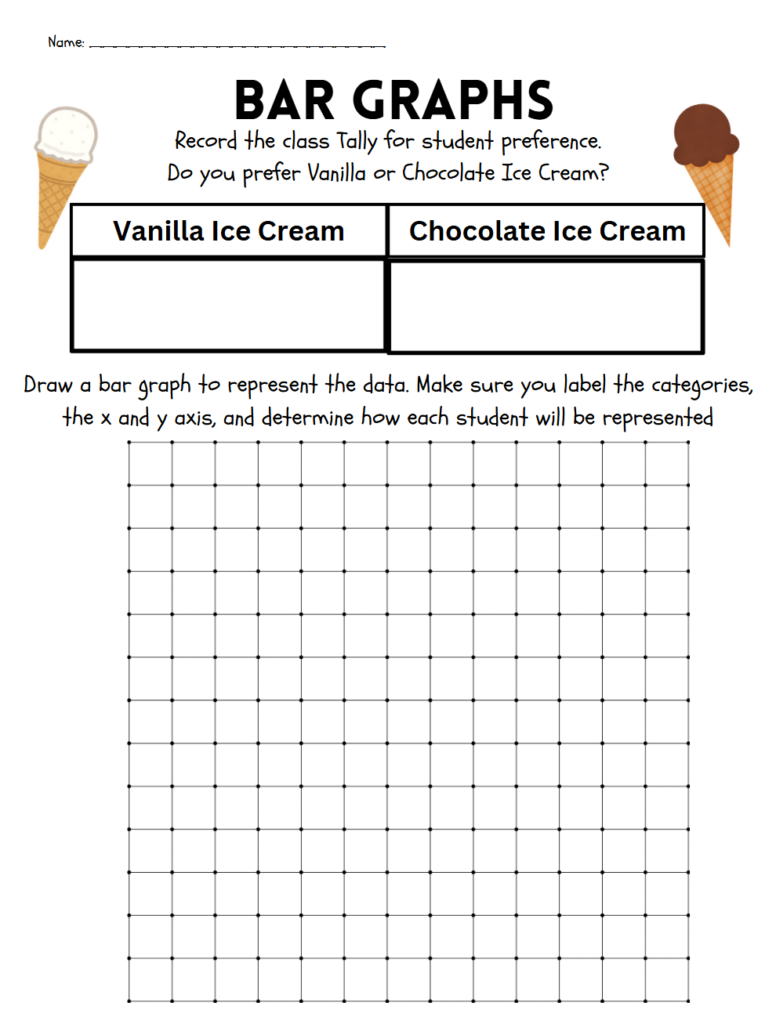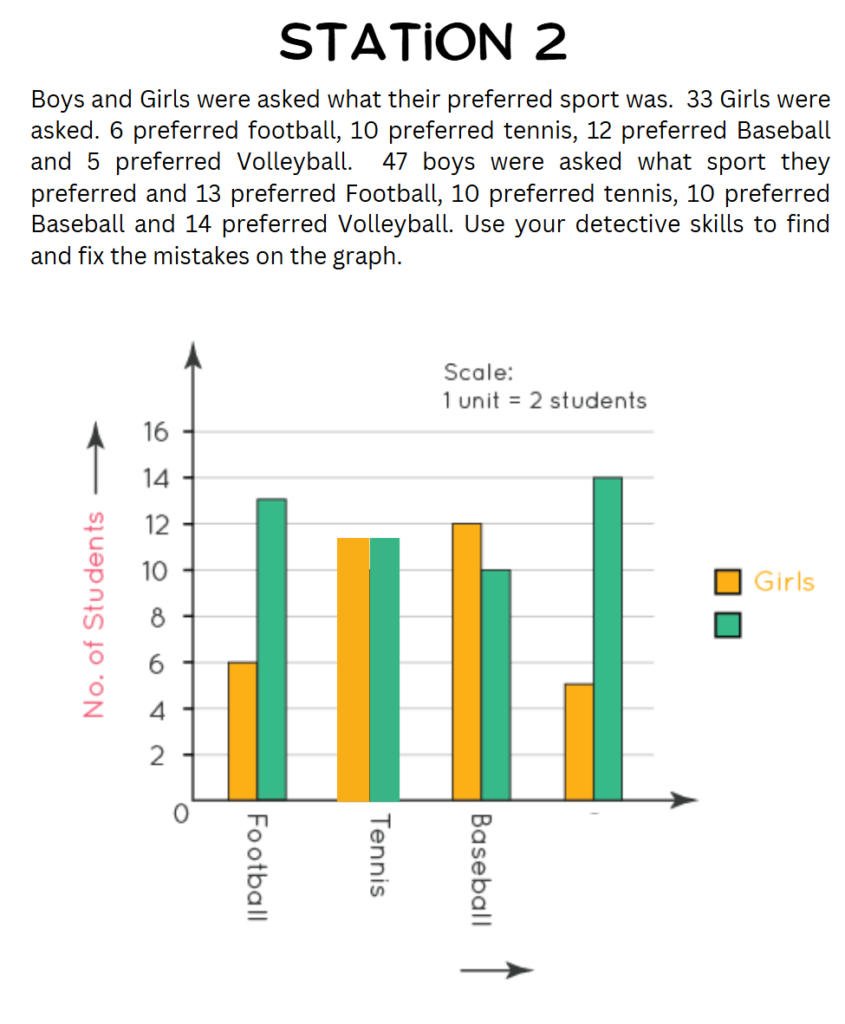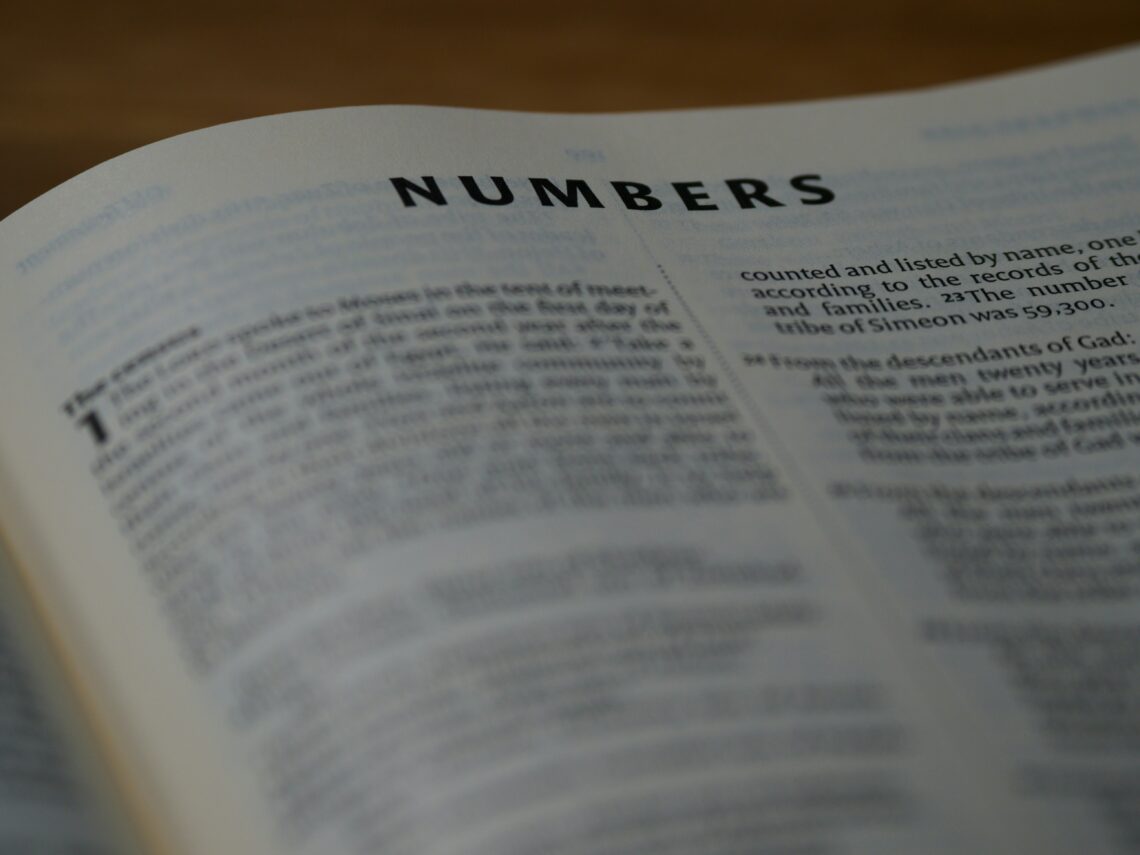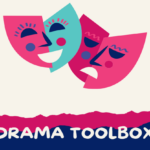Numeracy is an essential skill that plays a critical role in many aspects of our daily lives and personal development. It goes beyond simply performing basic math; numeracy encompasses the ability to understand, interpret, and apply numbers in a variety of real-world situations. This skill enables individuals to solve problems and make decisions in a wide range of everyday tasks, from managing personal finances and budgeting to planning travel itineraries and even cooking. By developing numeracy, people are better equipped to navigate life’s challenges, big or small.
In addition to its practical applications, numeracy also enhances critical thinking skills. It helps individuals assess situations logically, analyze patterns, and interpret data accurately. These abilities are especially valuable when making decisions, as numeracy allows individuals to evaluate different options, weigh potential outcomes, and choose the best course of action. Whether you’re making financial decisions, analyzing market trends at work, or even figuring out how to distribute resources in a group project, numeracy helps you make well-informed choices.
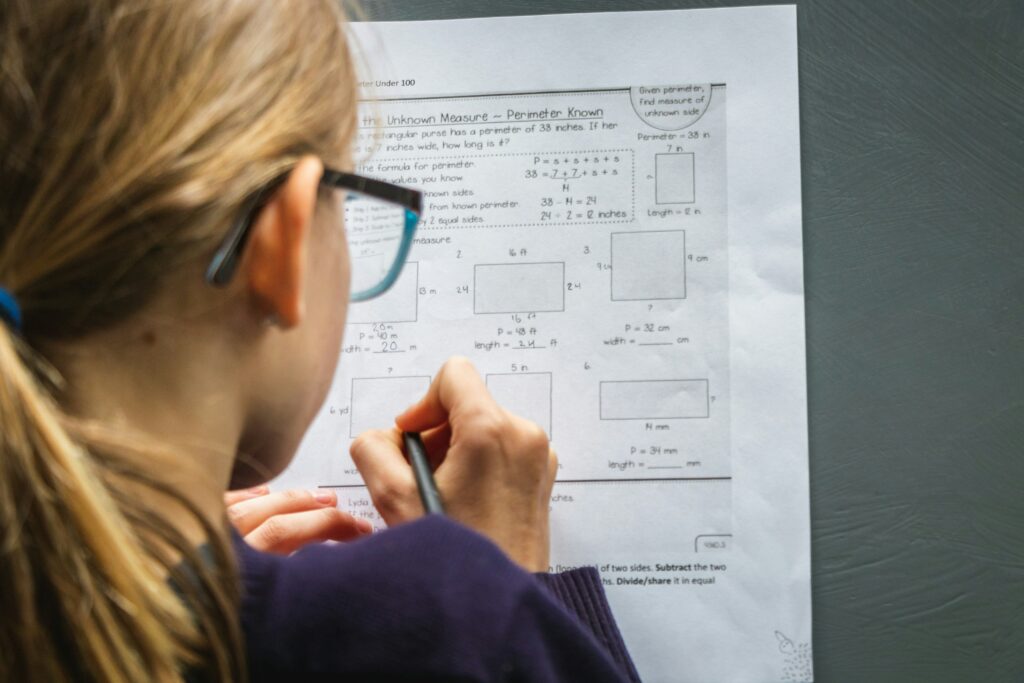
Numeracy is obviously a large component of K-12 education as it helps to form the foundation for many other areas of learning and development. For students, numeracy doesn’t just mean being able to solve equations or memorize multiplication tables; it’s about building a deep understanding of numbers, their relationships, and how they can be used to solve problems. Strong numeracy skills in K-12 education enable students to develop critical problem-solving abilities, which are essential for success in higher education and future careers. These skills also prepare students to engage with the world around them in meaningful ways, whether in fields like science, technology, economics, or in their everyday lives. The BC Curriculum offers valuable guidance on teaching numeracy and literacy in classrooms, emphasizing the integration of these foundational skills across subjects. To support educators in tracking students’ progress and ensuring proficiency, the Government of BC has developed a K-12 cross-curricular numeracy learning progression scale. This tool helps educators monitor and guide students as they build numeracy skills throughout their education, ensuring they are well-equipped for the challenges of the future.
Highlights of Lessons Created
Grade 4 – Measurement – Time and Perimeter


The ability to understand and manage time is an essential life skill that will play a significant role in a student’s future success, both in school and in their personal life such as social interactions, extracurricular activities and future employment. As students grow older, they will be expected to take on more responsibility for managing their own time. Building critical thinking skills, deepening their understanding of time concepts, and fostering time management along with scheduling abilities are all crucial for their future development and success. Mastering these skills at an early age not only helps students stay organized and meet deadlines but also promotes self-discipline, independence, and a sense of responsibility. As students learn to balance multiple activities and commitments, they develop the ability to prioritize tasks and make effective decisions. These skills will serve students for many years to come. I find time management a skill that I take pride in, an often fine myself bothered by other people’s tardiness. Giving time a value and helping students to understand the importance of time and schedules in their everyday life is a life skill that I feel is invaluable.
Grade 2 – Friends of Ten
Development of the lesson for a grade 2/3 class.
Part A – The Teaching
The Teaching will be finding the partners of 10 using a rainbow to show the partners. The importance of making 10 when working with larger numbers.
Part B – Learning Activity
The use of manipulatives and 10 frames to build their partners of 10 equations. Equations while learning the partners of 10 with the rainbow and game play. Use of counting back, mental math, counting on strategies to make the partner of 10.
Curricular Competencies:
Reasoning and Analyzing
- Develop mental Math Strategies and abilities to make sense of quantities
Communicating and Representing
- Use mathematical vocabulary and language to contribute to mathematical discussions
- Explain and justify mathematical ideas and decisions
Understanding and Solving
- Develop, demonstrate, and apply mathematical understanding through play, inquiry, and problem solving
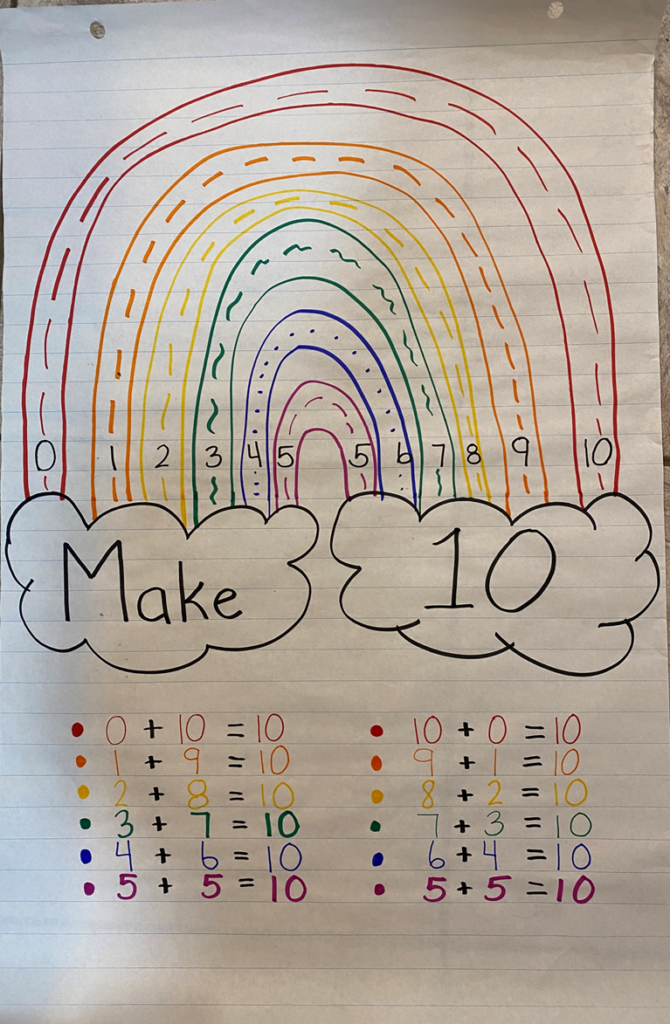
Students met the Reasoning and Analyzing competency in my lesson when as a group we discussed the partners of 10. They used mental math strategies as well as other strategies, such as counting on and counting back to fill their 10 frames. Students again met this competency when playing the board game in partners and completing their equations on the rainbow to 10 worksheets. I reviewed the partner of 10 and strategies that can be used to fill the 10 frame and find the missing number by means of modelling and demonstration.
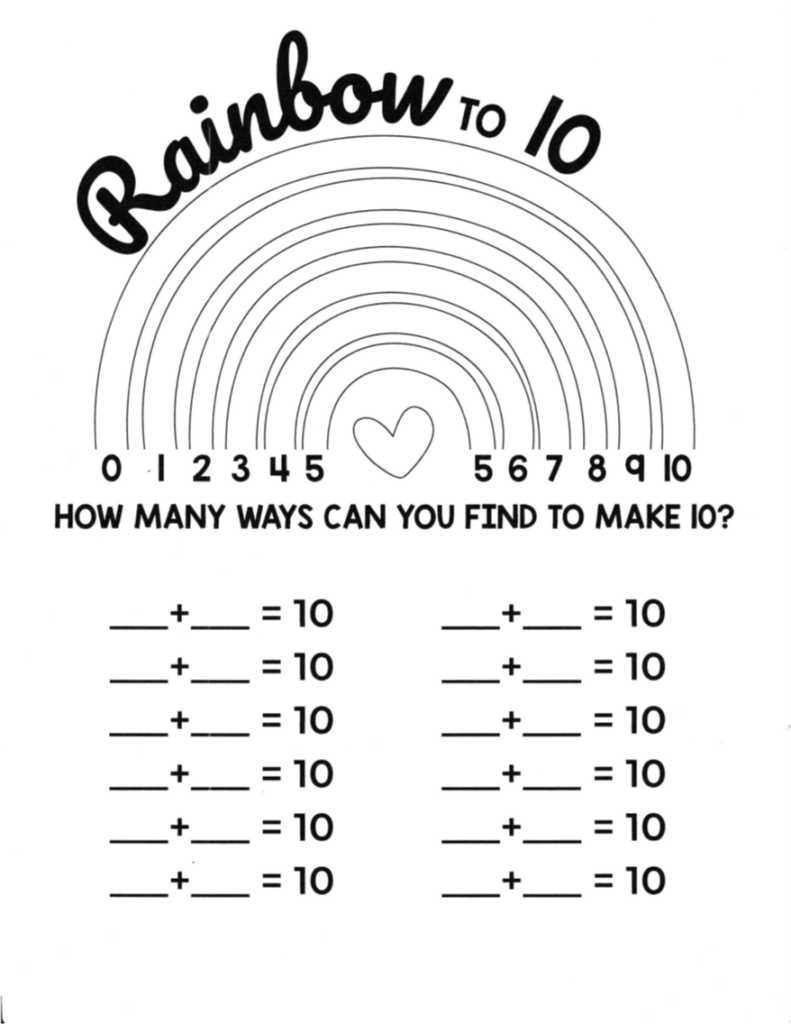

Students Collaborated when working with a partner to make 10 with use of the 10 frames as well as when they played to game to create their equations. Students were able to effectively work together as partners to create their 10 frames, and partner of 10 equations when playing the game. Their ability to explain to myself as well as their partner, showed that they were able to understand the teaching and process of making 10. I used Communicating and Representing before starting to colour the rainbow and game play. I demonstrated with use of mathematical language, the mathematical equation and use of word such as “and”, “equals” when looking at the rainbow addition equations. I provided verbal and pictorial visuals to demonstrate the equations and friends of 10.
The final competency, Understanding and Solving, was met through play when students created equations to find the partners of 10. Students were able to demonstrate and apply the mathematical understanding by filling in the blank equations to complete the partners of 10 by playing the game. Students used 10 frames to problem solve equations that weren’t able to figure out with mental math strategies. The Formative Assessment technique that I chose to use was an exit slip. I chose this exit slip as way to evaluate the students understanding of the lesson and the different ways to make 10. I decided to add a little ‘report card’ for myself so students also had an opportunity to rate my performance as a teacher. Most students found this to be funny and I was able to get mostly 5-star reviews.
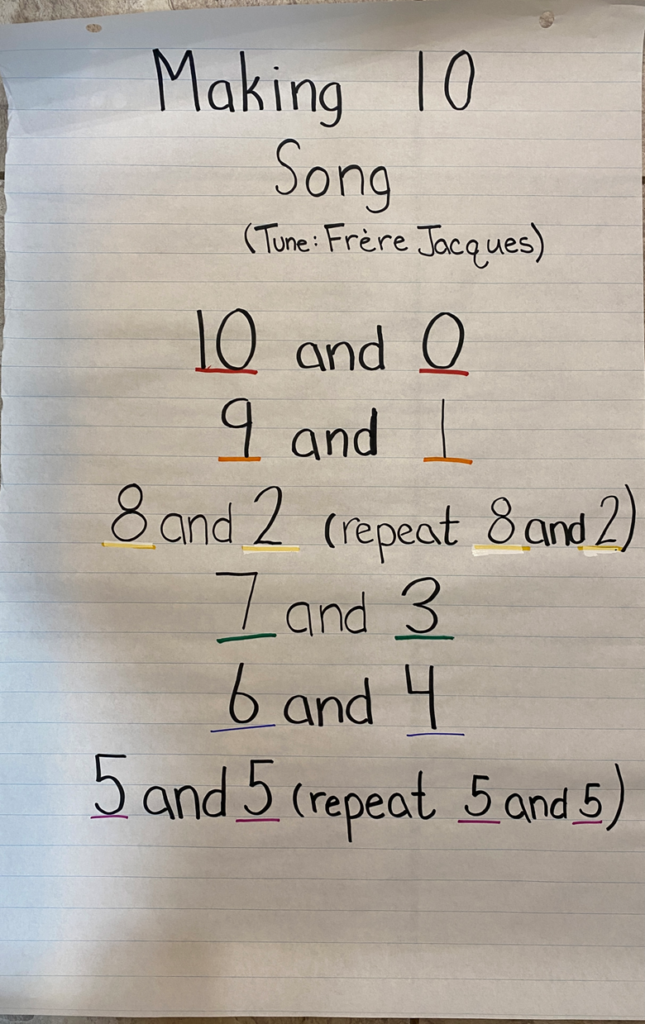
Grade 8 – Ratios
In our lesson, we explored concrete, pictorial, and symbolic representations of ratios using M&Ms as a hands-on tool. Students began by manipulating real M&Ms to create and understand ratios in a tangible way. They then transitioned to representing these ratios through drawings, drawing their own pictorial illustrations. To culminate their learning, students tackled multi-step word problems that reinforced their understanding. The worksheet encouraged students to play and experiment with creating ratios, allowing them to develop, demonstrate, and apply their mathematical knowledge through exploration and problem-solving. To conclude the lesson, students engaged in a game of Tic-Tac-Toe, using this playful activity to further showcase their mathematical understanding.
We used technology in our lesson by utilizing a Canva presentation to enhance our teaching. Our Canva presentation was presented to class on a smart board, where we could touch the screen and add additional learning to our lesson as we presented it to class. In addition to the technology that we used, there are a number of ways we could integrate technology into the lesson or classroom to make learning about ratios more engaging and relevant to students, fostering a deeper understanding and application of the concepts. Some examples of how we could integrate technology into our lessons are: Interactive apps and games, Virtual Manipulatives, video lessons, coding activities, as well as online quizzes and assessments.


In our lesson, we embraced Indigenous learning principles through the use of circle pedagogy, fostering a safe and inclusive learning environment. We began by tallying students’ favorite colors, which would later serve as engaging examples for our class discussions on ratios. As students explored real-life applications, they were encouraged to identify Indigenous practices that incorporate ratios, deepening their understanding of the concept. Additionally, we examined various Indigenous activities that could be adapted to our lesson content, as outlined in the extension’s column.
Our Teaching Technique:
- Clear Objectives: In our Canva presentation, we set clear objectives for the lesson.
- Step-by-Step Instruction: We began with the basic concept of ratios and gradually moved to more complex problems, as illustrated in our M&M worksheet.
- Modeling: During the Canva presentation, we modeled how to solve a ratio problem involving calculators.
- Guided Practice: We worked through an example as a class using the Canva presentation, which included various examples. We also provided support to students who needed extra assistance while completing the M&M worksheet.
- Independent Practice: After the presentation, students primarily completed the worksheets on their own to reinforce the skills and concepts they had learned.
Grade 5/6 – Data and Probability
A unit that focuses on data and probability is important because it helps build critical thinking, problem solving, and data literacy skills in students. By exploring concepts like theoretical and experimental probability, students learn to make predictions, analyze real world situation sand interpret data. These skills not only help students to better understand everyday situations but prepare students for more complex mathematical and scientific concepts in the future.
